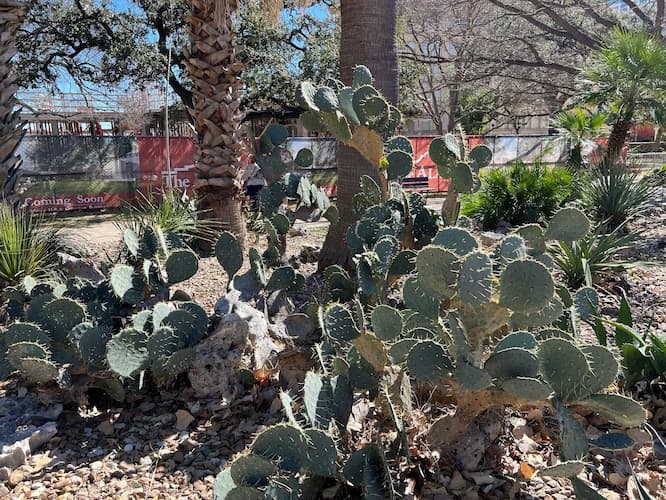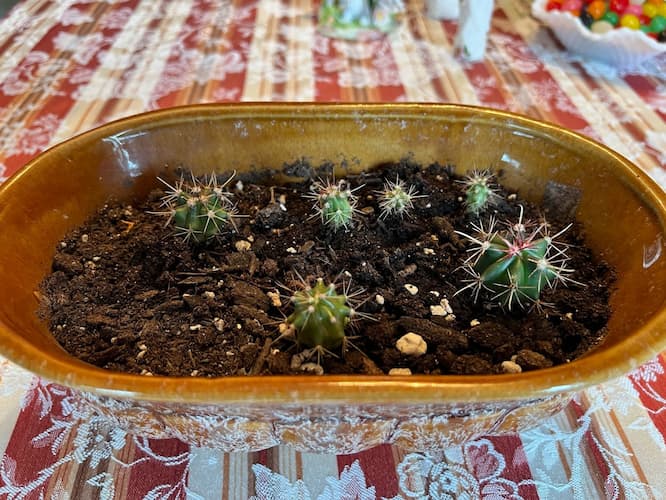How to Grow Succulent Plants

About Growing Succulent Plants
Hardy Succulent plants are a common sight in the drier, warmer, more arid parts of the country. Certainly, growing cactus in desert-like conditions is what you’ve been taught to expect, But, don’t be surprised if you see a few of the hundreds of types of succulents growing in colder, wetter parts of the country. So chances are, you can grow them in your backyard, or on a patio or deck. And, they make good indoor houseplants, too.
By definition, a succulent is a plant that holds water inside the tissue of its leaves, and sometimes its stem. Water is stored during rainy periods and later used by the plant during drier times and periods of drought. Succulents require little attention, a real plus for people with busy lifestyles.
Leaves of succulents are thick and usually rounded. They are commonly formed tightly around the stem forming a rosette”. There is a wide range of colors. Succulents are best known for their leaves. But, many plants produce attractive flowers, in many different colors. A flowering winter cactus is a real treat.
Indoors or out, you will enjoy growing succulents. They find themselves at home in a variety of garden settings. They look perfect and natural in rock gardens. Succulents make great container plants. And, they are forgiving when you go away on vacation. Succulents make good houseplants, too.
Did you Know?: A “Desertarium” is a terrarium for cactus and other succulents. More on Terrariums.
Common Types of Succulents
When we think about succulents, the first thing that comes to mind is the cactus. However, this species of plants is so much broader. Here are some of the better-known types of Succulents:
How to Grow Succulents Plants
Succulents are easy to grow. With a vast number of species, growing conditions will vary somewhat. Make sure to learn about the specific species you are growing for detailed how-to grow information.
All succulents prefer full sun. Well-drained soil is a must. All succulents suffer in wet soils. However, all varieties tolerate dry conditions and poorer soils.
When planting them, make sure the soil is well-drained. Elevating the soil of the area you are planting will help. Plan0 the crowns at the ground level of the soil. Do not bury the crowns.
These plants do not need a lot of water. However, they do need some water. Many varieties will not signal to you that they are thirsty, by wilting. Water the plants during extended periods of drought.
When growing in containers, mix 1/3 garden soil, 1/3 coarse sand or gravel, and 1/3 loam.
Also, the plants do not require a lot of fertilizer. In poor soils add a general-purpose fertilizer every one to two months.

Growing Succulents as Houseplants
Most types of succulents are good houseplants. They grow well, even with a little “intentional neglect”.
Garden stores sell a soil mix perfect for the plants. It is a light, sandy mixture. Yet, it has some loam in it.
Select a flowerpot that has a hole in the bottom and a saucer underneath to catch excess water.
First, place rich planting soil into the flowerpot. Next, put the plant’s root system in the soil level to where it was in the initial container. Then, water the plant so the soil is moist, but not wet. This helps the plant to settle into its new home. Finally, place the flowerpot where it will receive full to partial sunlight.
The succulent should be watered only when the soil is dry. You may go a few weeks between watering. Or, it may be about a week. Established plants will grow well for years.
Winter Hardiness
As winter approaches, reduce the amount of water the plant receives. Cover plants with protective covers, or bring plants indoors.
Some plant varieties are winter hardy and require less winter protection.
Insects and Plant Disease
Succulents have few problems with insects or plant disease.
The most common problem is rot and fungal diseases, when exposed to wet weather and soils.
Many plant varieties can freeze in cold weather, especially extended freezes.
Related Articles
Also, people who read this article on “How to Grow Succulents” will also like:
Please support our site. Shop for:
- rmmatthews100@hotmail.com
- 585-721-6528
- Rochester, NY
©1999-2024 GardenersNet.Com, All Rights Reserved

